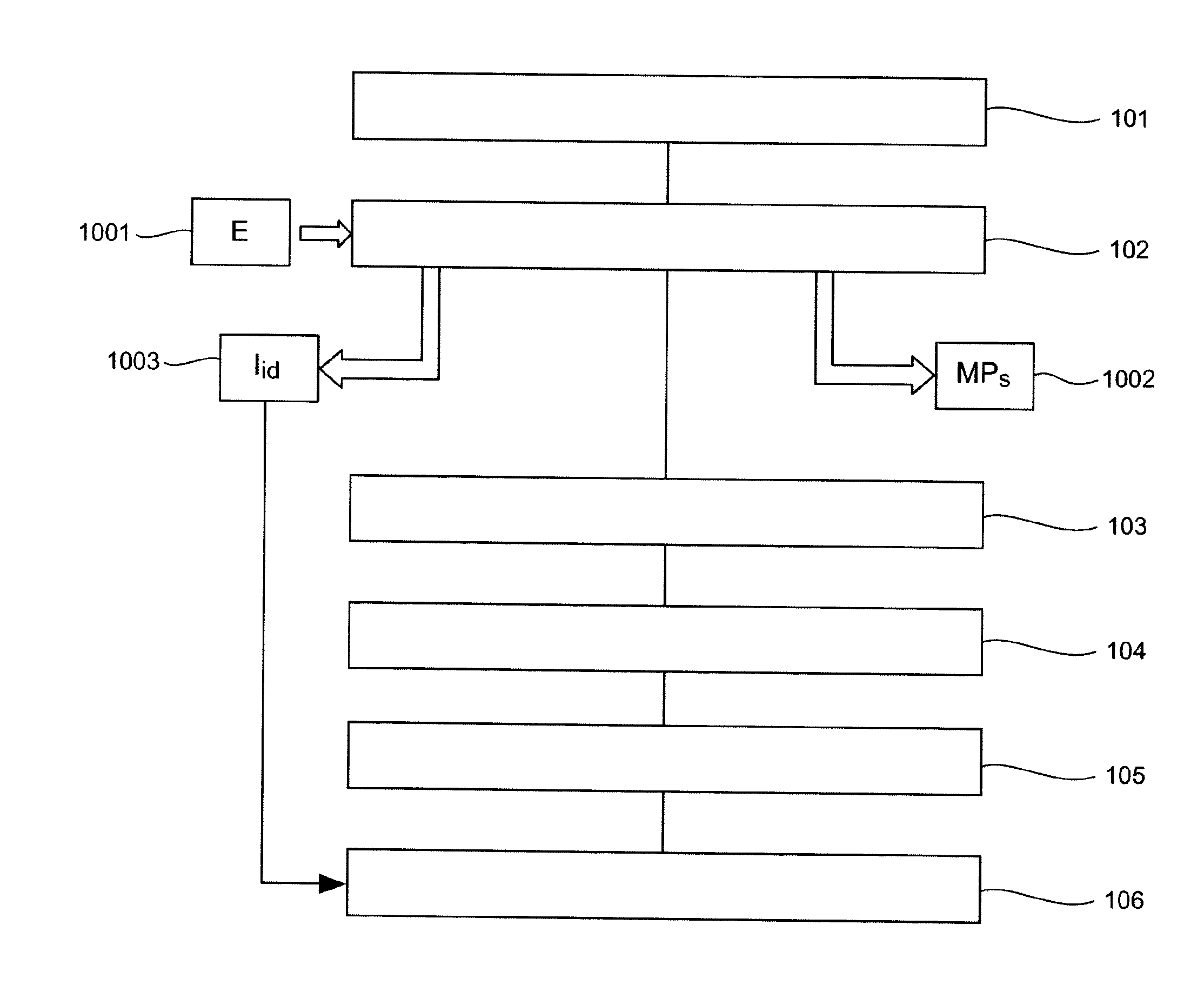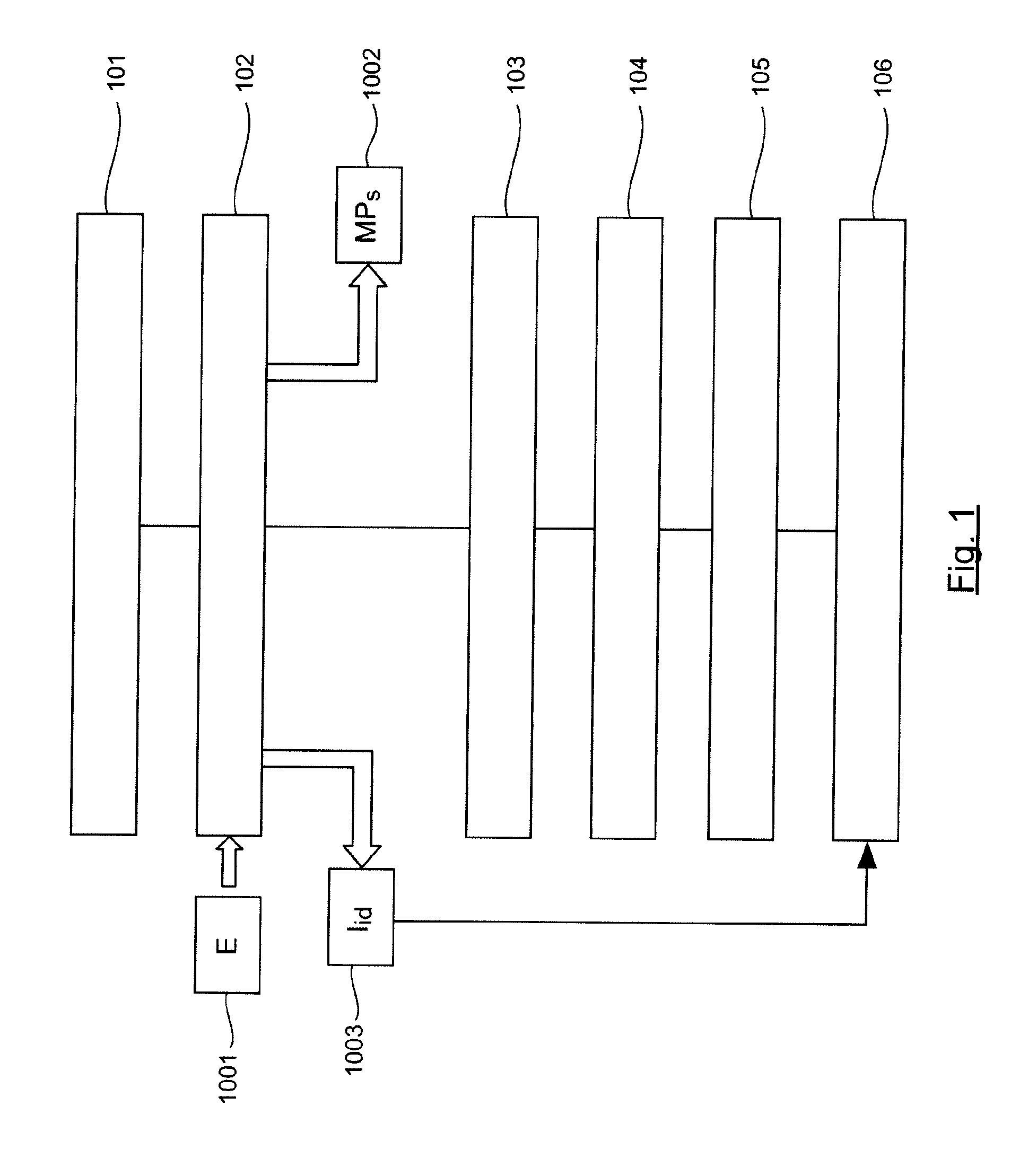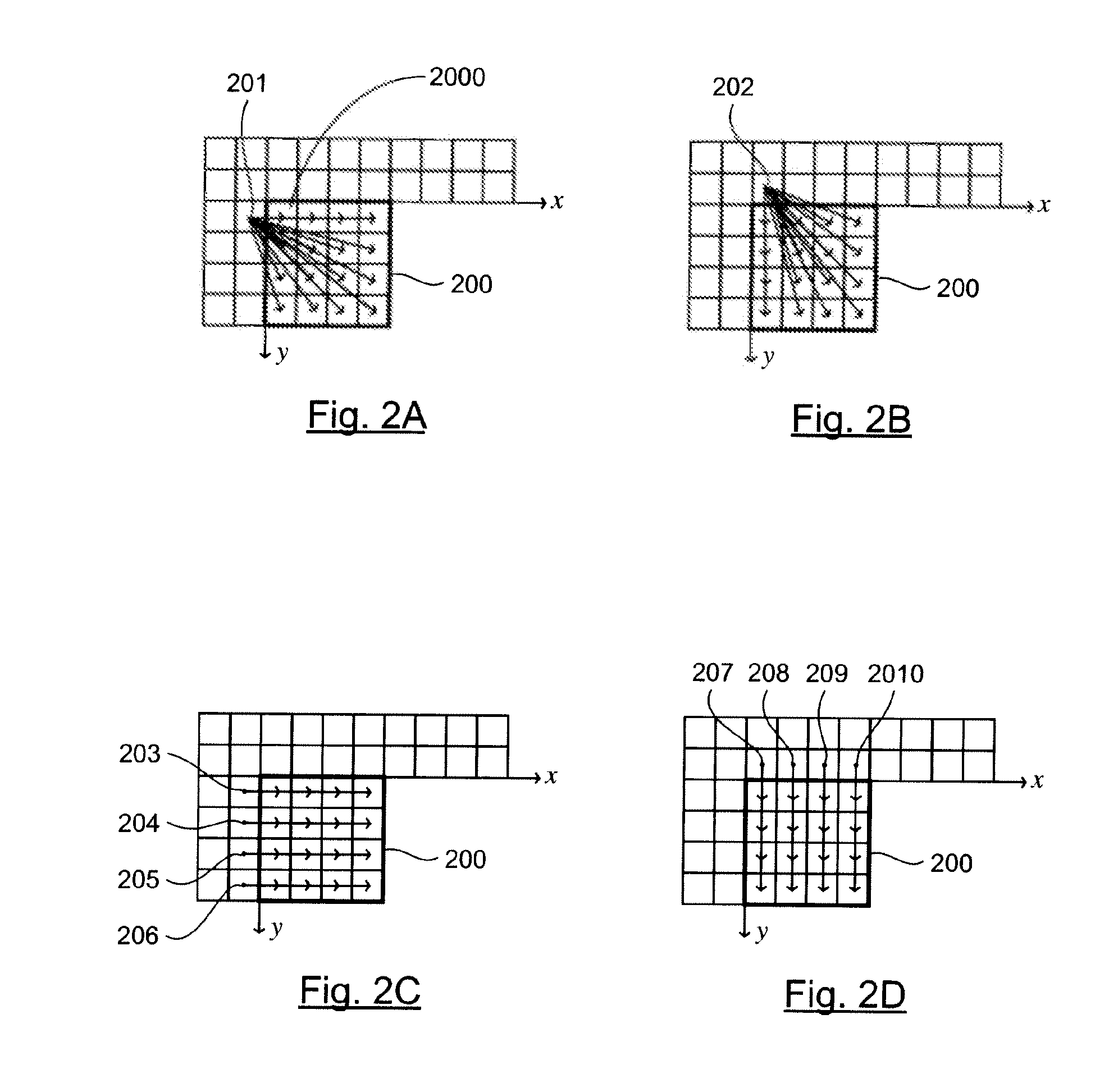Method of coding and decoding images, corresponding device for coding and decoding and computer program
a technology of image encoding and image, applied in the field of video stream encoding and decoding, can solve the problems of limiting the bit rate used in this network, limiting the uniform motion mode, so as to maximize the ratio between the bit rate and the distortion, improve the quality of image encoding, and limit processing time
- Summary
- Abstract
- Description
- Claims
- Application Information
AI Technical Summary
Benefits of technology
Problems solved by technology
Method used
Image
Examples
Embodiment Construction
[0091]1. General principle
[0092]The general principle of an embodiment of the invention relies on the building of extended-size blocks within at least one image. Such extended-size blocks are built by the grouping of sub-blocks showing a predetermined grouping criterion. For example, if the difference between two color vectors associated with two distinct sub-blocks is below a predetermined threshold, then these two sub-blocks can be grouped together on the basis of their similar color vector. We could also consider a grouping according to a criterion related to luminance, a piece of motion information and / or again a grouping of sub-blocks maximizing the bit rate / distortion ratio. In general, an extended-size block is created for reasons of efficiency of representation.
[0093]The technique of an embodiment of the invention makes it possible to implement, for at least one extended-size block, a motion prediction mode using at least two distinct motion prediction vectors. These two vec...
PUM
 Login to View More
Login to View More Abstract
Description
Claims
Application Information
 Login to View More
Login to View More - R&D
- Intellectual Property
- Life Sciences
- Materials
- Tech Scout
- Unparalleled Data Quality
- Higher Quality Content
- 60% Fewer Hallucinations
Browse by: Latest US Patents, China's latest patents, Technical Efficacy Thesaurus, Application Domain, Technology Topic, Popular Technical Reports.
© 2025 PatSnap. All rights reserved.Legal|Privacy policy|Modern Slavery Act Transparency Statement|Sitemap|About US| Contact US: help@patsnap.com



